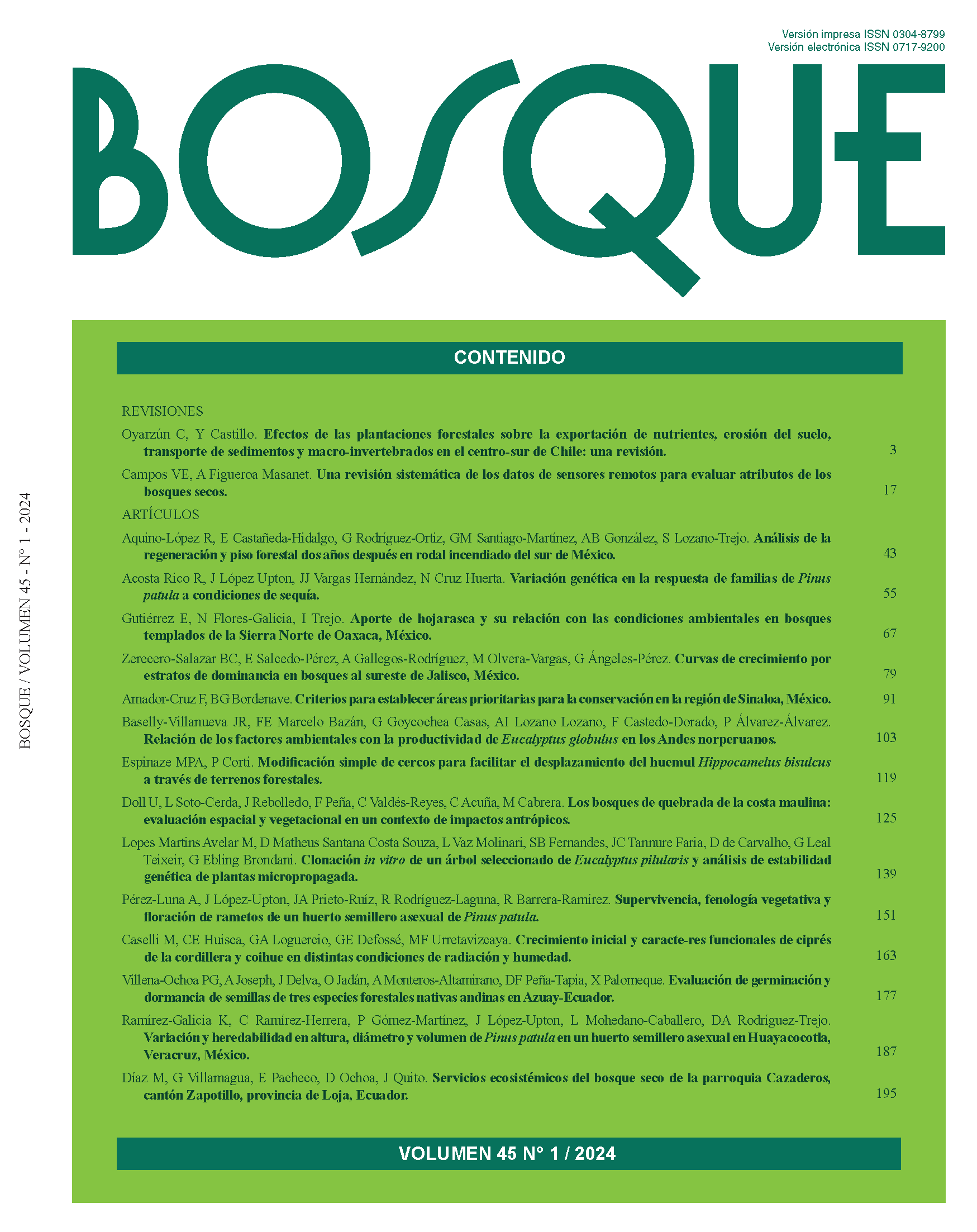Relationship of environmental factors with the productivity of Eucalyptus globulus in the northern Peruvian Andes
Main Article Content
Abstract
The South American Andes are a set of mountains that generate a diversity of climates. Eucalyptus globulus has been planted on many slopes of the northern Peruvian Andes at high altitudes (for example, in Cajamarca, Peru), but its growth and productive viability remain unknown. In the present study, the following objectives were established: i) to develop Site Index curves for stands of Eucalyptus globulus located in the Peruvian Andes above 3,000 meters of altitude, ii) to analyze the relationship between environmental variables and Site Index, and iii) to evaluate the potential effect of cold on the growth of these stands compared to those in other regions. The Site Index (SI) was estimated using three base growth models (Bertalanffy-Richards, Hossfeld and Korf) and two derivation methods (Algebraic Differences - ADA and Generalized Algebraic Differences - GADA). The relationship between environmental factors and SI was determined by Spearman’s correlation coefficient. The potential effect of altitude was evaluated by comparing the site quality curves obtained with those of other regions. The dynamic equation, derived from the Bertalanffy-Richards model using GADA, explained much of the variability of the dominant height growth. The SI was well correlated with distance to water bodies and to a lesser degree with solar radiation, effective depth and base saturation. In addition, compared to other regions, slow growth was evident in the initial stage of planting, probably due to the effect of cold acclimatization (derived from the high altitude).


 https://orcid.org/0000-0001-7795-7925
https://orcid.org/0000-0001-7795-7925